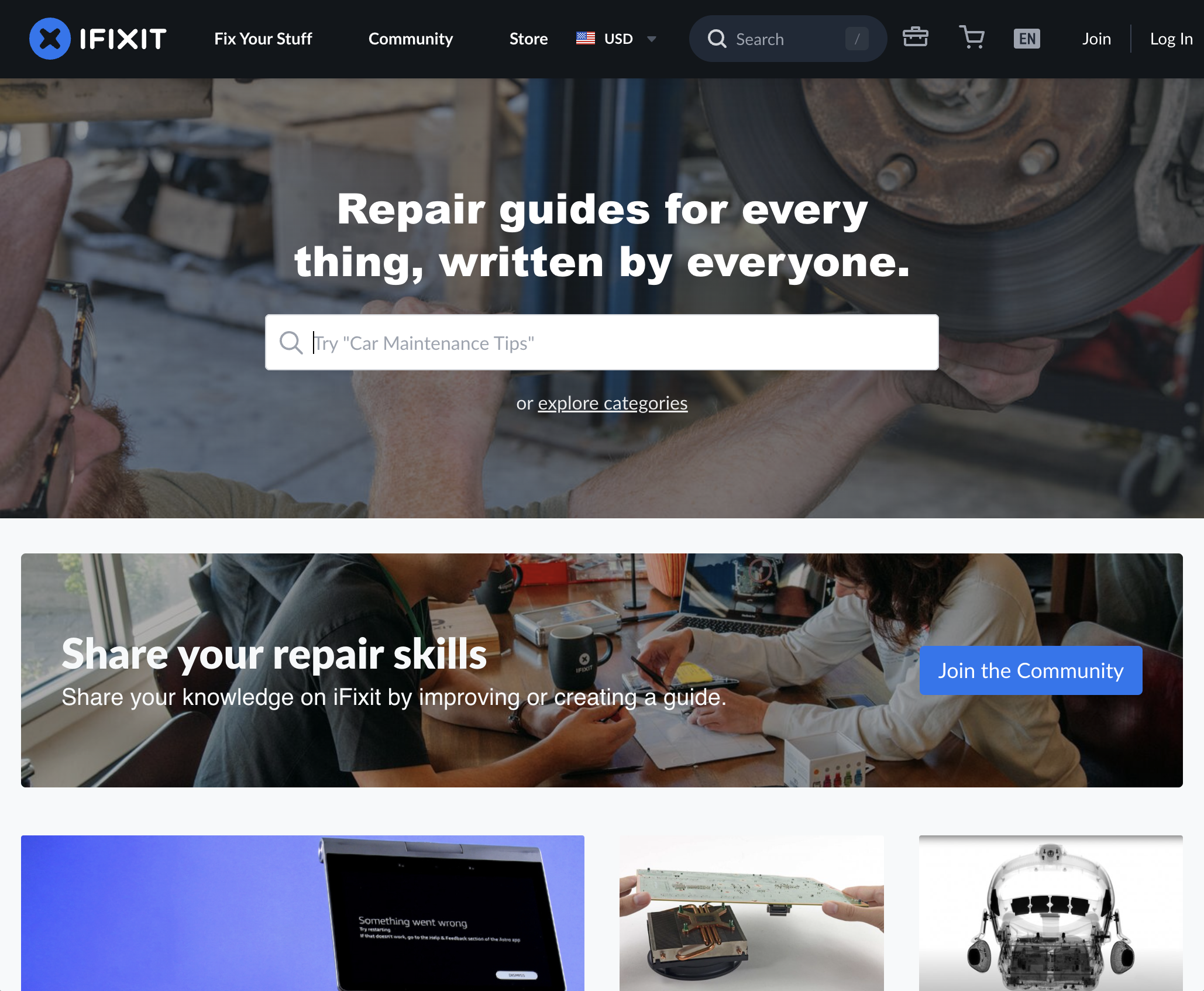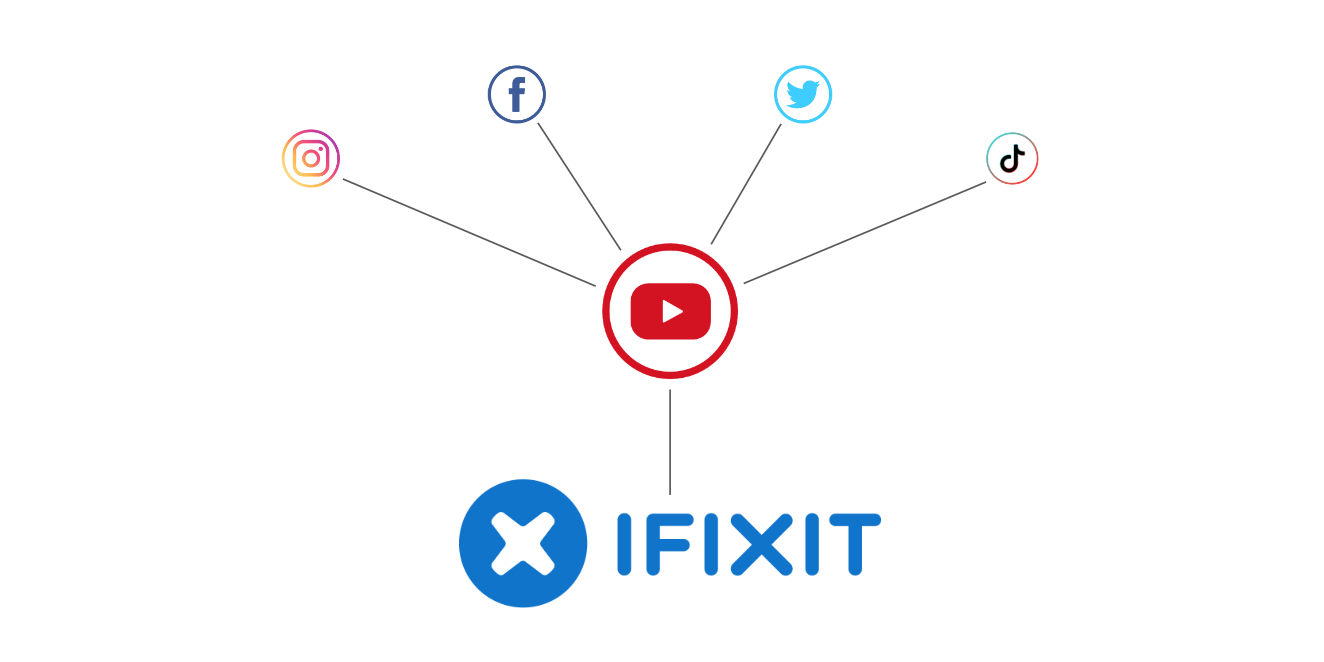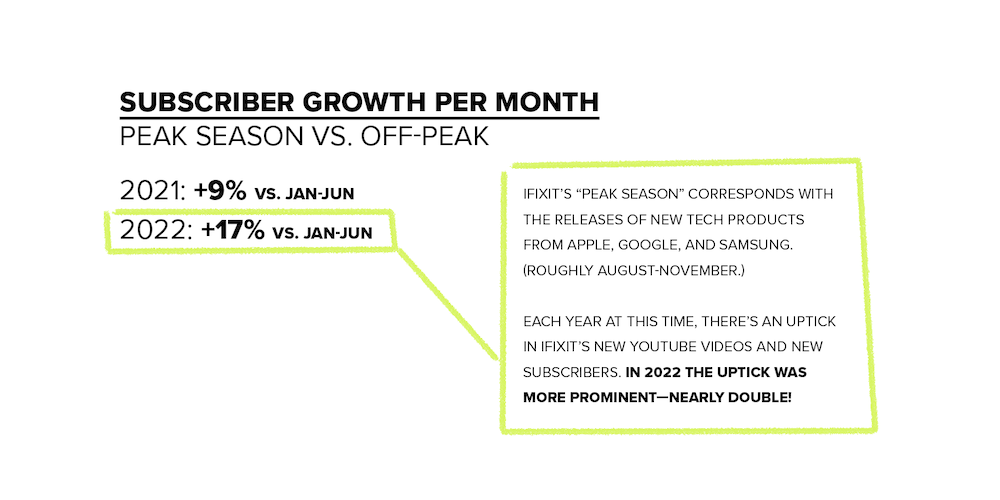Case Study: “The Lily Pad Effect” — Identifying & Growing a Base of Power Users, Leveraging a Single Channel as a “Lily Pad”.
When the data proved YouTube was making power users out of iFixit fans, we built a social media strategy designed to accentuate and capitalize on this channel. Six months later, the results are in.
When we started working with iFixit, the world’s foremost hub for tech repair guides and tools, we started like we do with all of our retainer clients: by doing a thorough audit of their brand and their digital marketing ecosystem (for them, the focus was strictly social media). In the process, we got to know their brand and audience very well. The consumer behavior data we observed led to an insight: website visitors from YouTube behaved like “power users.” Armed with this knowledge, we tailored their social media strategy to support the growth of YouTube and, in so doing, nurture more power users. YouTube would be a gateway or “lily pad” for iFixit fans—an immersive stopover between the rest of their social media channels and their website.
When their most significant month for new videos rolled around, this souped-up social ecosystem delivered. Not just on YouTube but also on Instagram and TikTok. Across multiple dimensions, you could see the impact of what we’ve affectionately dubbed “The Lily Pad Effect.”
But how did we find their power users? And how did we sync up iFixit’s social media ecosystem to support their “lily pad” social channel (YouTube)? What exactly were the results? And how can you, brand X, find your power users and design a content marketing strategy that makes the most out of what you do best?
Let’s dig in.
The Insight
By analyzing behavior data from iFixit’s social media audience—seeing how fans interacted with their site, how often they visited, for how long, etc.—we realized that fans coming to the website from iFixit’s YouTube were, in essence, power users. They were coming more often, staying longer, and making frequent purchases. iFixit’s in-house marketing team would have, anecdotally, said this is the case. But our analysis lent the hunch statistical credence.
How did we conduct this analysis? (This is the obvious part for you digital marketers out there.) First, we opened Google Analytics, drilled down to sessions from social media over the past 12 months, and compared with the channels listed. Here we could compare Users, New Users, Sessions, Session Duration, etc., across their main social media channels.
To be clear, you can’t just set up Google Analytics on a whim and expect to extract these nuggets. Google Analytics must have been set up long enough to give you a reliable sample size. If you don’t have Google Analytics set up, there’s no time like the present to do it. And if you don’t know how, we’re happy to help. There are also ways to pick out some of the same data using native tools in web hosting platforms like Shopify and Squarespace.
Side note — This insight isn’t rocket science. We didn’t unearth Gobekli Tepe. In fact, that’s kind of the point: doing this analysis is relatively simple. We just want to encourage you to think about analyzing your audience to see if there’s data that can inform how you tailor your content strategy.
Here’s what we found:
YouTube sent 19% more repeat visitors to their site than the other social channels, on average
YouTube had a 25% lower bounce rate than the other social channels, on average
Visitors from YouTube viewed 58% more pages per session than the other social channels
YouTube referrals had more than a 2x longer session duration than the other social channels
YouTube had more than 2x the conversion rate of the next highest social channel
The Strategy
With this knowledge, we built our social media content strategy around YouTube being a gateway or “lily pad” for iFixit super-users. We aimed to sync up their social media ecosystem (Instagram, Twitter, TikTok, Facebook) to support the growth of YouTube, knowing that viewers and subscribers on YouTube turn into high-value website traffic (and invested community members) down the line.
A simple visual of the lily pad approach.
Specifically, what did this look like?
It looked like a playbook, which listed the ways we’d activate each social media channel every time iFixit dropped a new YouTube video. For example, on Instagram, each new YouTube video drop would be supported with 1 short-form Reels post, 1 Instagram story announcing the drop, and 1 Instagram story ‘reminder’ to be shared a couple of days later; we’d update the New Videos Instagram highlight with the story post, and we’d pin the Reel to the top of our feed for a time. All of these posts announce the drop of the new video and give a call to action for fans to watch the full-length video on YouTube.
The checklist might look like this:
Example of an Instagram activation checklist.
We’d have a similar checklist for Facebook, Twitter, and TikTok.
Side note — Ideally, the creative for each social channel is complimentary, not identical; visually and vocally cohesive, but not redundant. This is a best practice for any ecosystem-wide messaging push. It keeps things on brand while giving fans a reason to follow you on each channel.
In addition to supporting new video drops, we worked with the iFixit team to identify evergreen YouTube videos, then developed short-form video cuts and other social assets to breathe new life into these.
With new and high-performing, evergreen videos supported by the rest of the social ecosystem, we started to see our “lily pad” strategy take effect.
The Results
“Peak season” for iFixit’s YouTube is roughly August - November. They release the newest videos during this stretch because it’s when the big tech companies (Apple, Samsung, Google, etc.) release their latest and greatest gear. iFixit, in turn, takes those products and uses them to make their signature Teardown videos—videos in which they take a new piece of tech, like the iPhone 14 Pro, and deconstruct it to analyze its design and engineering and determine how repairable it is.
Our YouTube-supporting “Lily Pad” approach was peaking at the right time. As iFixit released new Teardowns, we lined up channel-specific posts on Instagram, TikTok, Facebook, and Twitter to support the releases.
The timeliness of these Teardowns is essential (people care about the new iPhone when the new iPhone comes out), so to compare September results to say June wouldn’t be apples to apples. But when you look at 2022’s “peak season” for iFixit compared to 2021’s peak season, you can see the impact of a synced-up social ecosystem.
We saw a significant increase in the number of website visitors from YouTube who were new users. In addition, fans from our other social media channels discovered iFixit’s YouTube and hopped across the lily pad…
We also saw a bigger bump in YouTube subscriber growth during 2022’s peak season (relative to 2022’s non-peak months) than we did in 2021…
The other social channels weren’t suffering to prop up YouTube, either. Short-form videos are having a moment on Instagram and TikTok, and the short-form video cuts we shared on these channels proved to be algorithm candy…
On Channel Specificity
Highlighting YouTube videos wasn’t our only goal for iFixit’s social media. We also wanted to create standalone value on each social channel so that fans would have a reason to follow and stay tuned to all of them. It couldn’t only be “hey go see our YouTube” every time we posted. For one, there weren’t enough new YouTube videos for that. But that would undermine the unique value each social channel can provide a brand and its fans. So the Lily Pad was a priority, but not the only thing.
For example, in auditing iFixit’s social media channels, we noticed that despite having 77,000 followers on Instagram, compared to 109,000 on Twitter and 138,000 on Facebook, their Instagram was driving less than 2% as much web traffic as those channels were. So we also set out to improve Instagram’s contribution as a driver of organic traffic to the site.
Every social channel had a couple of goals like this, which were woven into our comprehensive social media strategy, of which highlighting YouTube was only one part.
Marketing Infrastructure + Investment
It’s worth noting that there was a reason YouTube was iFixit’s “wheelhouse” channel. They already had an in-house YouTube team producing new video content regularly (something many brands don’t have). This is a significant investment in content, and it’s paid dividends for iFixit over the years.
They also had a big social audience across all their channels (something else many brands don’t have). When we started working with iFixit, they already had over 1.2M fans on social media, providing large sample sizes of data and allowing new tactics to make large-scale impacts immediately.
But you can start small. Many brands we work with are nurturing social media audiences of only a few thousand and have scrappy marketing budgets. It’s all good.
Remember: know thyself. Identify what you’re uniquely qualified to talk about and what medium best suits that discussion. Start building a content library from there. Invest in multifunctional content that can be used in organic and paid efforts. Give your approach enough time to bear results. Learn and pivot along the way. In time you’ll develop an audience.
And if you’ve read this far, you’ll have a head start applying ecosystem-wide best practices. Establishing good digital marketing habits early on is always recommended.
How To Find Your Power Users + “Lily Pad” Channel
You probably already have a hunch about which channel you’re best on. And if you’re right. You’ll find the data to back it up. But here are some simple steps to guide you:
Go to Google Analytics (or whatever analytics platform you have available).
Line up all your social channels and see how site visitors from each are behaving. Beyond monthly traffic, are there behavior cues suggesting an audience you’ve built on one specific channel has power users?
Once you know where those folks are hanging out, identify the moments (on a marketing calendar, ideally) when this “lily pad” channel and its power-user audience will be most active or important—a string of big video drops, a new product launch, a month-long branding campaign, etc.
List out ways your supporting channels can amplify your “lily pad” channel during those key moments. Get specific. This will be your playbook. How can you point your other fans to this focus channel (and, hopefully, convert them to a power user in the process)?
Execute.
What to do if you don’t find power users: Don’t worry. You can still use fundamental tactics to ensure the social channels you’re emphasizing fully support your other channels (short-form video cuts, designed assets, CTAs, teasers, etc.)
The key takeaway is simple: Make sure you spend time thinking about and analyzing consumer behavior on your channels and your website. And use what you find to create a content marketing plan that emphasizes your areas of strength.
Have questions? Want to talk more about power users and ecosystems? Hit us up! Our strategists and creative can provide a free consultation.







